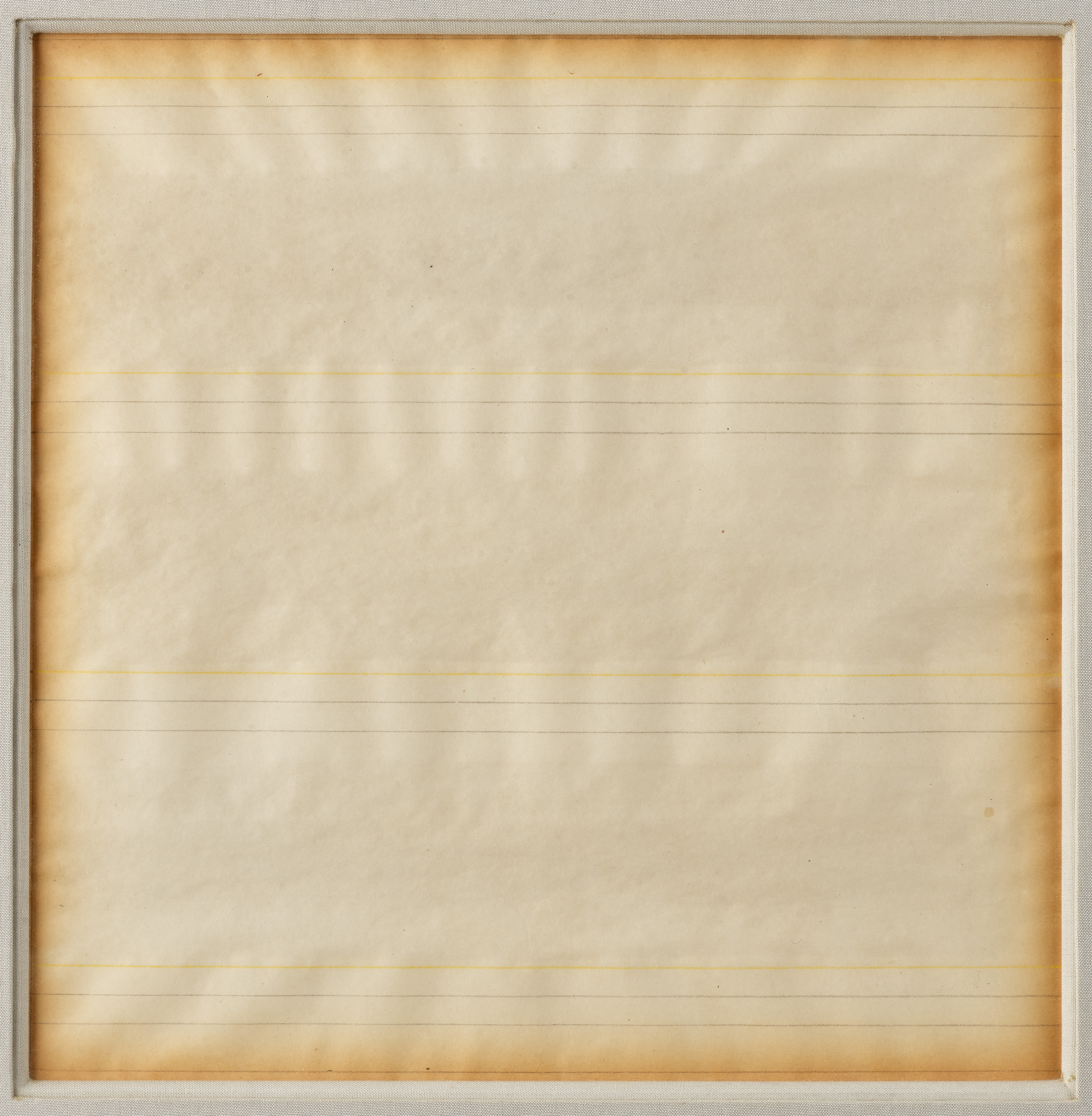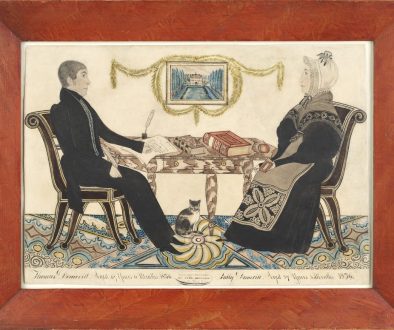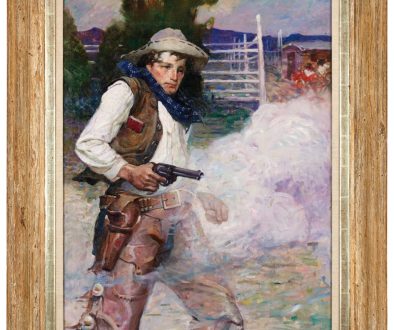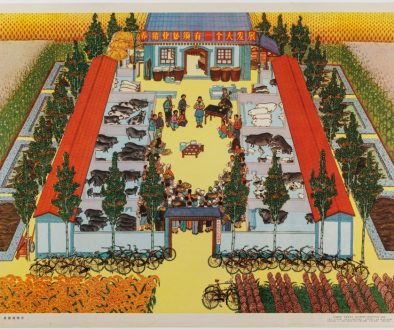Off the Grid
What does the sensation of beauty look like in a painting? The challenge for Agnes Martin was not to paint a beautiful object, but the sensation of perceiving it; that, when looked at, would be felt by others. “My paintings are not about what is seen. They are about what is known forever in the mind.”
Born in 1912 on the plains of Saskatchewan, Martin moved to Washington state at the age of 19 to live with her sister. She stayed in the US for higher education, first training as a teacher at Western Washington University and Columbia, and then the University of New Mexico for fine art and Columbia for modern art.
Emerging from two decades of education at the age of forty, she moved from New Mexico to New York City and lived amongst avant-garde artists in Coenties Slip, lower Manhattan. Other artists in her circle of friends included Ellsworth Kelly, Lenore Tawney, Ann Wilson, and Robert Indiana. Martin’s New York heyday was the decade from 1957 to 1967. Drawing inspiration from transcendentalism, Taoism, and Zen Buddhism, she became a minimalist pioneer. Her art took the form of 7 ft square grid-lined canvases. She was photographed on ladders plotting gridlines onto the canvas with rulers, tape, and string. Why gridlines? “I was thinking about innocence, and then I saw it in my mind-that grid,” she told critic Joan Simon. She sought perfection and to see transcendental reality, without letting technique or subject matter stand in the way. She believed spiritual inspiration, not intellect, created great work. Her goal was to not have ideas, to have a vacant mind, and wait for inspiration to guide her. Her paintings were of happiness, innocence, and beauty. She sought to portray the intangible experiences in life, unconfined by form. Her works are free of subjects. They are ethereal, summoning joy in the observer.
Martin was a groundbreaking artist and gained recognition for her uniqueness. Finding success in her career, privately she struggled to cope with debilitating paranoid schizophrenia. She was frequently hospitalized over her decade in New York with aural hallucinations and states of catatonia. She was treated more than once with electroshock therapy. Martin has been endlessly romanticized, withdrawing into herself, creating with her art the balanced, tranquil spaces in which she found happiness.
Agnes Martin’s decade in New York came to an end in a convergence of adverse events: her studio building slated for demolition, the death of a friend, and the end of a romance. She burned all her art and gave away her painting supplies. She packed an Airstream camper and hit the open road, traveling the western US and Canada. Eighteen months later she settled in New Mexico on a remote mesa. There she lived a monastic lifestyle, focusing on study and writing. She had no electricity, plumbing, or telephone. She wrote to Sam Wagstaff: “… but even more fantastic I do not think that there will be any more people in my life.”
In 1973, Martin found a new mode of expression that revived her interest in painting. “One time, I was coming out of the mountains, and having painted the mountains, I came out on this plain, and I thought, ‘Ah! What a relief!’ (This was just outside of Tulsa.) I thought, ‘this is for me!’ The expansiveness of it. I sort of surrendered. This plain… it was just like a straight line. It was a horizontal line. And I thought there wasn’t a line that affected me like a horizontal line. Then, I found that the more I drew that line, the happier I got. First I thought it was like the sea… then, I thought it was like singing! Well, I just went to town on this horizontal line.”
Represented by Arne Glimcher and Pace Gallery, she experienced financial success for the first time. Martin was able to purchase her own home, and was able to travel and exhibit at her own pace. Belying her reputation as a recluse, in her last decade Martin became involved in children’s and community projects, donating millions of dollars to bring joy and happiness to the residents of Taos. She died in Taos in 2004.
For your chance to own a work by Agnes Martin, please join us at Pook & Pook for our September 25-27th, 2024 Americana & International sale.
by: Cynthia Beech Lawrence
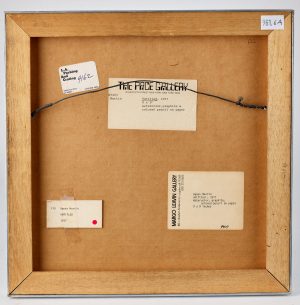
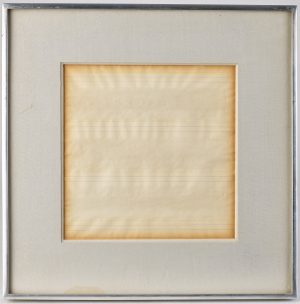
Bibliography:
Christopher Regimbal, Agnes Martin Life & Work
John Gruen, The Artist Observed
Henry Martin, Agnes Martin: Pioneer, Painter, Icon

